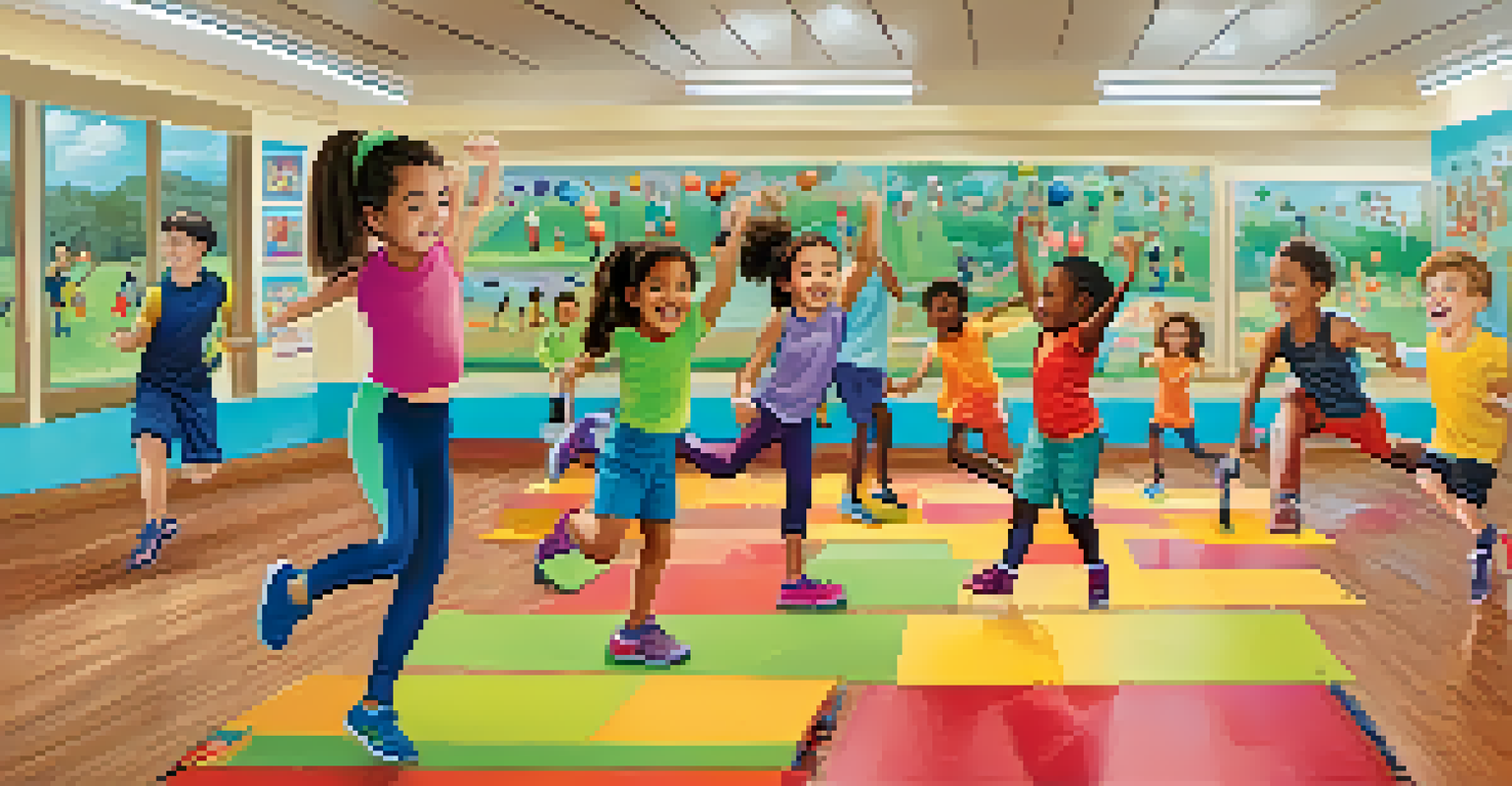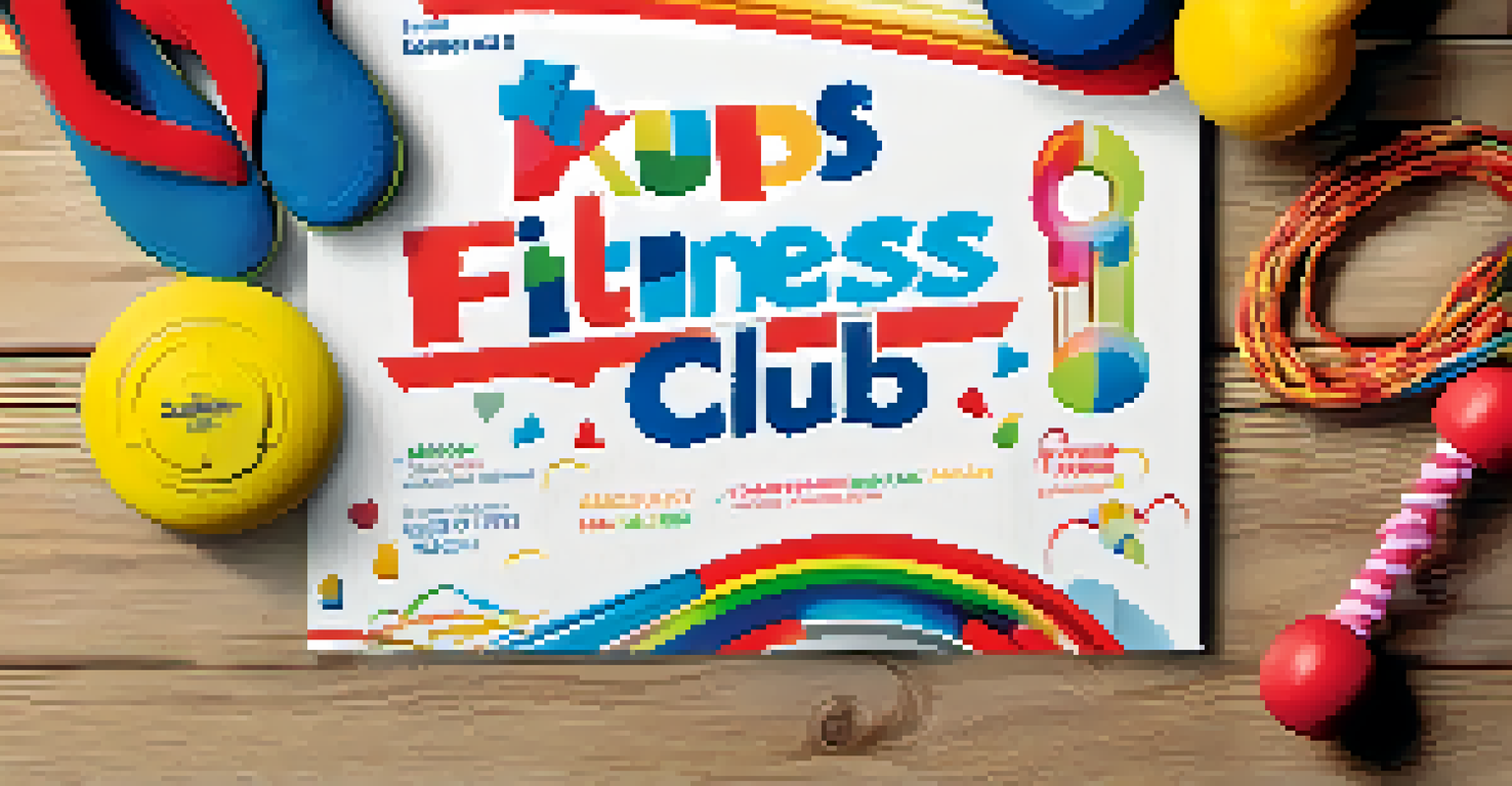How to Start a Kids' Fitness Club at School

Understanding the Importance of Kids' Fitness
Kids' fitness plays a crucial role in their overall health and development. With rising rates of childhood obesity and sedentary lifestyles, promoting physical activity in schools is more important than ever. A fitness club can inspire children to be active and enjoy exercise in a fun and supportive environment.
Physical fitness is not only one of the most important keys to a healthy body, it is the basis of dynamic and creative intellectual activity.
Not only does fitness help in maintaining a healthy weight, but it also boosts mental health, enhances social skills, and improves concentration in academic settings. By creating a kids' fitness club, you can help foster a lifelong love for physical activity. This initiative can set the tone for healthier habits that extend beyond school.
Additionally, involving kids in fitness activities can teach them valuable lessons about teamwork, perseverance, and discipline. These attributes are essential not just in sports, but in all areas of life. By prioritizing kids' fitness, you're investing in their future well-being.
Gathering Support from School Administration
Before you dive into starting a fitness club, it's essential to have the backing of your school's administration. Approach the principal or relevant staff with a well-thought-out plan that outlines the benefits of the club. Highlight how it aligns with the school's mission to promote student health and wellness.

Having the administration's support can also help you access resources like gym facilities, equipment, and potential funding. Don't hesitate to share success stories or examples from other schools that have similar programs. This can provide a compelling case for why your school should invest in a kids' fitness club.
Kids' Fitness Boosts Overall Health
Promoting physical activity in children enhances their physical health, mental well-being, and social skills.
In addition to getting the green light, encourage the school to endorse the club as part of its extracurricular activities. This way, you can attract more participants while establishing a sense of legitimacy and importance for the program.
Creating a Clear Vision and Objectives
Every successful club starts with a clear vision and set objectives. Ask yourself what you hope to achieve with the kids' fitness club. Whether it's improving physical health, teaching teamwork, or simply having fun, defining these goals will guide your activities and help keep everyone focused.
The greatest gift you can give your children is your time.
Consider involving the kids in this process. Gather their input on what activities they find exciting or what skills they wish to learn. This not only makes them feel valued but also ensures that the program resonates with their interests, helping to maintain engagement and enthusiasm.
Setting measurable objectives, like increasing participation in physical activities by a certain percentage, can help track progress. Regularly reviewing these goals will also allow you to adjust the program as needed, ensuring it remains effective and enjoyable for all participants.
Planning Engaging Activities for Kids
The heart of any fitness club lies in its activities. It's vital to plan a diverse range of engaging exercises that cater to different interests and skill levels. From team sports like soccer and basketball to fun activities like obstacle courses or dance classes, variety will keep kids excited and eager to participate.
Consider incorporating games that promote physical fitness, such as relay races or tag. These not only provide a workout but also encourage teamwork and social interaction among peers. Remember, the primary goal is to make fitness enjoyable, so don't shy away from incorporating elements of play and creativity.
Engaging Activities Keep Kids Active
Diverse and enjoyable fitness activities, such as sports and games, will encourage ongoing participation among children.
To keep things fresh, rotate activities regularly and even consider seasonal themes. This can include outdoor activities in the spring and summer and indoor games in the colder months. Keeping the schedule dynamic will help maintain interest and encourage kids to bring their friends along.
Recruiting Volunteers and Coaches
A successful kids' fitness club often requires a team of enthusiastic volunteers or coaches. Reach out to fellow teachers, parents, or even older students who have a passion for fitness. Their involvement can provide valuable support and guidance while creating a more robust program.
When recruiting, look for individuals who not only have experience in fitness but also possess the ability to engage and motivate kids. A positive attitude and an understanding of child development can go a long way in creating a welcoming atmosphere. This can make all the difference in helping kids feel comfortable and excited to participate.
Encourage volunteers to share their unique skills, whether it's yoga, martial arts, or dance. This diversity can enhance the club's offerings and keep activities interesting. Plus, it fosters a sense of community as everyone contributes to the club's success.
Promoting the Club to Students and Parents
Once your plans are in place, it's time to spread the word! Create colorful flyers and announcements that highlight the benefits of joining the kids' fitness club. Use engaging visuals and simple language to capture the attention of both students and parents.
Consider hosting an introductory meeting or a fun kickoff event where parents and children can learn more about the club. This can also serve as a platform to answer questions and gather sign-ups. The more excitement you generate, the more likely kids will want to join.
Community Support is Essential
Gathering support from school administration and recruiting enthusiastic volunteers can significantly enhance the success of a kids' fitness club.
Utilizing social media or the school's website can also help reach a broader audience. Regular updates about club activities, success stories, and upcoming events will keep the community informed and engaged. This can help build a sense of ownership and pride among participants and their families.
Evaluating and Adapting the Club Over Time
Once your fitness club is up and running, it's important to take a step back and evaluate its effectiveness. Collect feedback from participants to understand what they enjoy and what could be improved. This can be done through surveys or casual discussions after sessions.
Be open to making changes based on this feedback. If kids express a desire to try new activities or if attendance starts to dwindle, don't hesitate to adapt your plans. A flexible approach will help keep the program aligned with participants' interests and needs.

Regular evaluation not only helps in maintaining the quality of the club but also empowers kids by making them feel heard. This sense of involvement can further enhance their commitment and enthusiasm, ensuring the fitness club remains a vibrant part of their school experience.